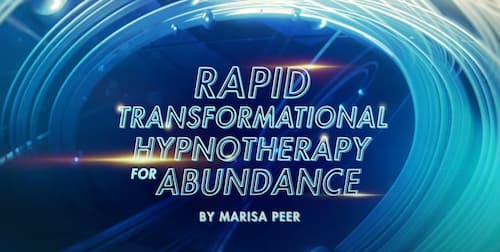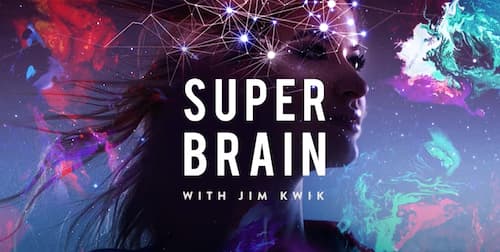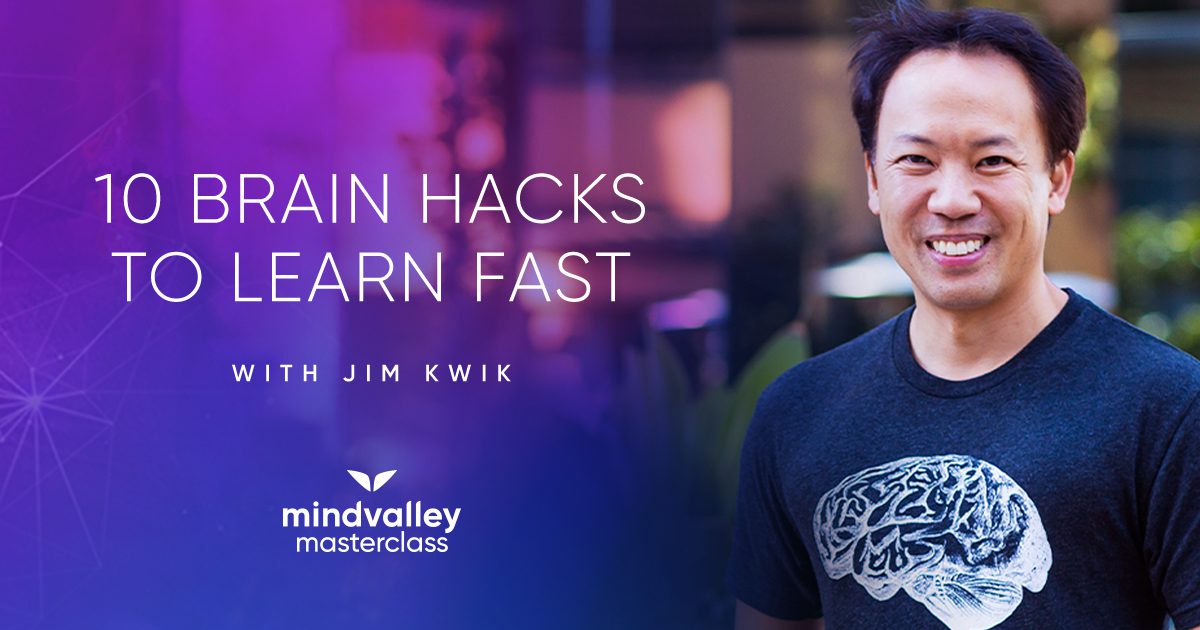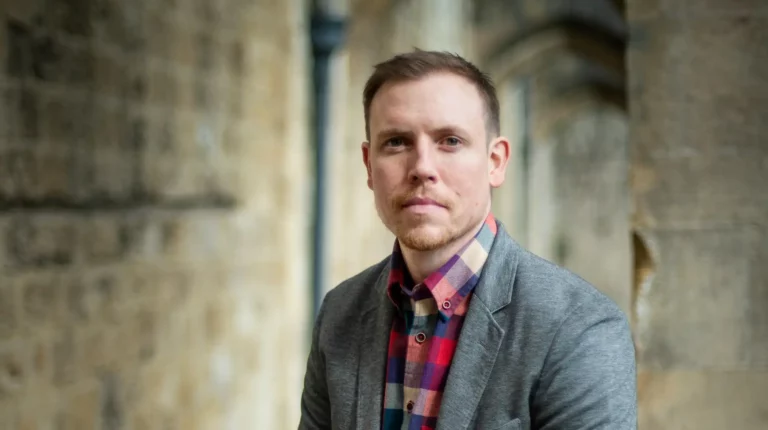What would it be like if every decision you made didn’t involve your personal feelings or over-emotional reactions? What if your perspective was always balanced and decisions completely informed? Is it not time that you used critical thinking questions to become the more levelheaded, cool, and calm person you want to be?
Being a critical thinker enables you to take a neutral perspective on an idea or scenario and gives you the power of true choice. Being free from manipulation or emotional ties to your decision will allow you to make the most beneficial choice in any circumstance.
In critical thinking, we are taught to question everything. However, the question behind the question is; what questions should you be asking? Before we go into the critical matter of the exact questions, we should first look at the manner in which these critical thinking questions should be asked. After this article, you will be a wizard at asking critical thinking questions.
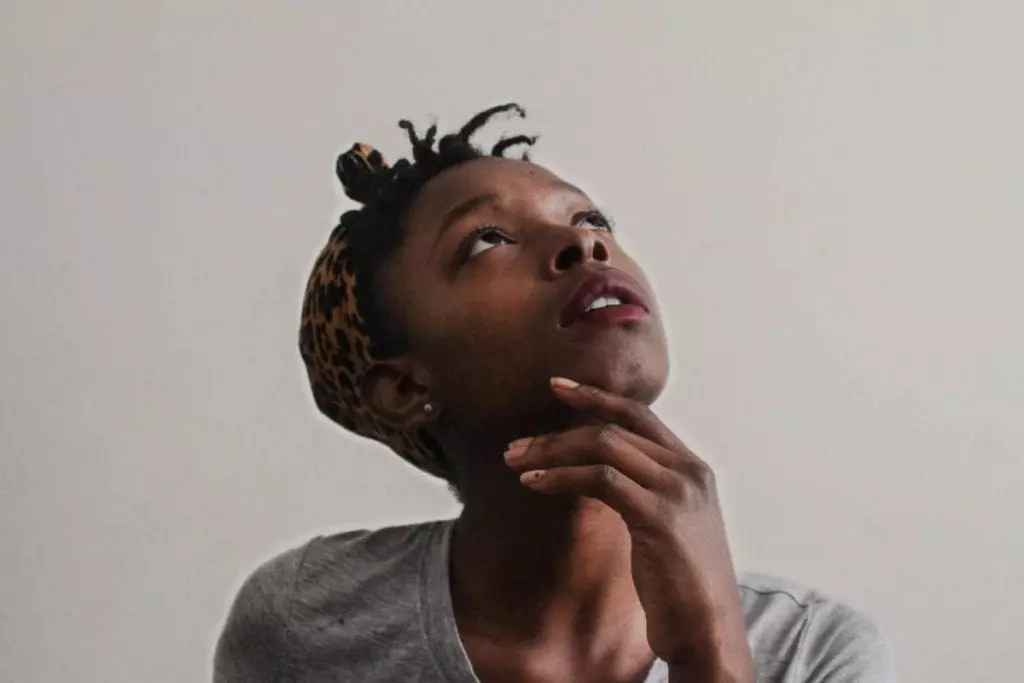
The Standard of Questions You Should Ask
Although the actual questions will be very important to critical thinking, the emphasis and purpose of these questions will determine how effective the questions will be. You must first know how to question before you know what and which critical thinking questions to ask.
1. Open-ended questioning
As a critical thinker, you cannot allow whomever or whatever you are questioning to give you the smallest amount of information for your questions. Yes or No answers can really drag out the process of getting the answers and information that you want.
Asking questions that will not only give you the answers you are looking for but also open up a heap more information than you were searching for. Ask open-ended questions such as the following:
- “What is the purpose of this scenario?” Instead of: “Is this the purpose of this scenario?”
- “What is your favorite thing about this scenario?” Instead of: “Is this your favorite thing about this scenario?”
2. Avoid leading questions
Being a critical thinker is about escaping your bias and seeing things outside of your personal perspective. It is thus very important to avoid leading the question, in an area you want it to go.
Keep your questions as neutral as possible and don’t allow any definitive language to creep into the question. Such as using the following:
- “What is your take on the healthiest diet there is?” Instead of: “Don’t you think the vegan diet is the healthiest diet?”
- “What is the condition of the country at the moment?” Instead of: “How bad is the condition of the country at the moment?”
3. Specify the boundaries of your questions
As much as leading a question can be a hindrance to what you want, so can leaving the question too open, and invite unnecessary information to be given. Critical thinking is about being objective, but it still needs a direction and focus in which you apply your critical thinking.
Make sure that you set up an accurate framework in which your questions can be answered. Being too broad makes the process of getting answers inefficient and drawn out. Try asking questions like:
- “Who is your favorite male tennis player in the United States?” Instead of: “Who is your favorite tennis player?”
- “If you could live anywhere in South East Asia, where would that be?” Instead of: “If you could live anywhere, where would that be?”
4. Funnel the questions until you get the answer you were looking for
When questions remain shallow, it is easy for the sources of information you are questioning to mislead and avoid giving you the information that you want.
Do not set up the path of questions beforehand, but rather make sure that you dig deeper after each question in the direction of information that you really want. Once you have your answer, then move back to broader questioning in order to get a better picture of the whole once again.
5. All the answers to your question must be based on facts and well supported from many different sources
Make sure that you don’t give into hearsay. Find the studies, the science, and ample testimonials before you accept the information that you have been given.
Look into many different and unrelated sources to see if the information matches up. Look at the other side of the argument and validate their claims.

Methods of Critical Thinking Questions
1. The 5 W’s and the H
These are the absolute basics of critical thinking. The Who, What, Where, When, Why, and How are foundational questions that are taught over and over in journalism, investigation, and research.
They are the base from which every critical analysis should be created. You would apply these questions as follows:
Who:
- …would benefit?
- …would this harm?
- …is responsible?
- …has researched this before?
What:
- …is the other perspective?
- …would be the challenges?
- …are the strengths?
- …is the key subject?
Where:
- …would this problem reside?
- …are there similar situations?
- …can more information be found?
- …can this be improved on?
When:
- …is this acceptable and unacceptable?
- …could this be implemented?
- …would we be able to measure the results?
- …is it time to stop this action?
Why:
- …is this a problem?
- …is this relevant?
- …should this be known about?
- …is there a need for this?
How:
- …is this different from anything else similar to it?
- …it functions?
- … is this the truth about it?
- …could it harm anyone?
2. Agenda and method questioning
These two areas of questioning may have already been covered through the 5 W’s and the H. However, it is beneficial to emphasize the angle from which this questioning comes.
The first one is questioning the agenda. This is aimed at figuring out how people could benefit from a situation or idea. This agenda can place all the information received in context.
For instance, if a company was contributing to a charity and their agenda was to improve their image against the damage done by that company, then the contributions would be much less charitable and much more about publicity.
Questions that would help clarify the agenda would be:
- What is the person or organization involved trying to accomplish?
- What issues or problems are raised by the person or organization involved?
- What data, what experiences, what evidence is given?
- Is the person or organization involved thinking about the environment?
- Is the person’s or organization’s thinking justified as far as we can see from our perspective?
- And how do they justify it from their perspective?
- How can we enter their perspective to appreciate what they have to say?
The second aspect of this is questioning the method. As a critical thinker, this makes the outcomes of every situation and idea questionable, which is exactly the point of critical thinking.
Too many times the outcome of a specific method is the focus of debate, without clarifying if that outcome has validity.
Questions that would help clarify the Method would be:
- Is the person or organization involved willing to fundamentally rethink their methods of creating a certain outcome?
- Has the person or organization involved thought about how the method will work going into the future?
- To what extent has the method been tested?
- Is there any other method that could be used to produce this outcome and what would be the implications of this method?
- Is the person or organization involved willing to allow this method to be tested?
- In what other situation has this method been used and how effective was it?
3. Inquiry process
The inquiry process is exactly that; a process. It does entail certain questions but the power of this process resides in the way the process is conducted.
This process is the standard of research and creates an order in which you can follow, uncovering the information that you seek. Although the terminology may change for each step of the process, the essence of what needs to be done remains the same.
The process is divided as follows:
- Ask (Pose Question)
- Investigate (Find Resources)
- Create (interpret/ Synthesise)
- Discuss (Report findings)
- Reflect (follow the process backward)
4. Bloom’s taxonomy
Bloom’s taxonomy was created by Dr. Benjamin Bloom, a psychologist in the 1950’s. Bloom’s work was to create a better form of learning through more focus on analysis and evaluation.
Bloom’s taxonomy is very much Maslow’s hierarchy of needs to critical thinking. The original Bloom’s taxonomy encompasses:
Knowledge:
- What is the subject?
- When did it happen?
Comprehension:
- How would you compare the subject?
- Explain the subject in your own words?
Application
- What examples can you find of the subject?
- What approach would you use to solve the problem?
Analysis:
- What inference can you make from the information?
- How would you classify or categorize the subject?
Evaluation
- How would you compare the information?
- What was the value or importance of the information?
Creation or Synthesis
- Can you propose an alternative interpretation of the information?
- What might happen if you…?
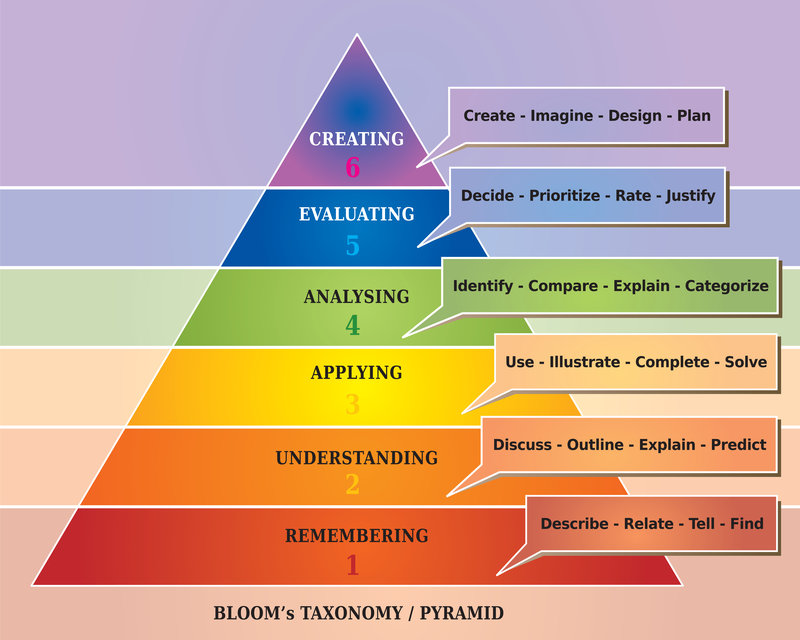
Bloom’s Taxonomy has since been revised. In 2001 a group of cognitive psychologists, curriculum theorists and instructional researchers, and testing and assessment specialists change the titles of each level to make a more dynamic approach to the system.
The titles were revised to:
Remember
- Recognizing
- Recalling
Understand
- Interpreting
- Exemplifying
- Classifying
- Summarizing
- Inferring
- Comparing
- Explaining
Apply
- Executing
- Implementing
Analyze
- Differentiating
- Organizing
- Attributing
Evaluate
- Checking
- Critiquing
Create
- Generating
- Planning
- Producing
In the process of the revision, the authors broke the knowledge area into its own taxonomy:
Factual Knowledge
- Knowledge of terminology
- Knowledge of specific details and elements
Conceptual Knowledge
- Knowledge of classifications and categories
- Knowledge of principles and generalizations
- Knowledge of theories, models, and structures
Procedural Knowledge
- Knowledge of subject-specific skills and algorithms
- Knowledge of subject-specific techniques and methods
- Knowledge of criteria for determining when to use appropriate procedures
Metacognitive Knowledge
- Strategic Knowledge
- Knowledge about cognitive tasks, including appropriate contextual and conditional knowledge
- Self-knowledge
If you want to know more about the reasoning behind the revision click here.
5. Integral questioning
Integral theory was created by Ken Wilber (author of A Brief History of Everything) and has become one of the most useful structures of evaluation in this era. The integral model is a reference structure in which you can objectively see all areas of a specific subject.
This method goes hand in glove with the practice of critical thinking. Applying the method into question form will bring out the following analysis:
Quadrants: this is the evaluation of each viewpoint of a certain subject.
- What does a specific person involved think or feel about the subject?
- What studies and tests have been done on the subject?
- What do the people as a whole feel or think about the subject?
- What does the industry of the subject say on the subject?
Lines: These are the areas of understanding of factors involved in the matter.
- What are the different areas of life expressed in this subject?
- What factors are involved in the situation or subject?
- To what area of understanding does is the subject appeal to?
Levels: This deals with a hierarchical standard of a certain area of the subject.
- To what level of understanding does is a subject appeal?
- How complex or advanced is this subject?
- What standard of knowledge needs to be obtained to understand this subject?
State: This refers to a fleeting state of being in which the subject can be seen in.
- In what state of mind was the person involved in when reviewing the subject?
- In what state of mind was the person involved in when the situation occurred?
- Is the information given contextual to a certain situation?
Types: This is a division of experiences based on traits that could affect perspective.
- How would someone who is completely different from the person involved perceive the situation?
- What different types of people were involved in the situation?
- How could this subject be received differently by a different cultural reference?
Question Everything
You now possess all that you need to start becoming a critical thinker and asking critical thinking questions. The only way to engrain the above processes and questions to become a critical thinker is to practice. You might need to refer to this article consistently at first, but after time you will become a natural and healthy critical thinker.
This video may help to ignite your passion for questioning everything:
Read more on critical thinking by checking out these related articles and resources:

